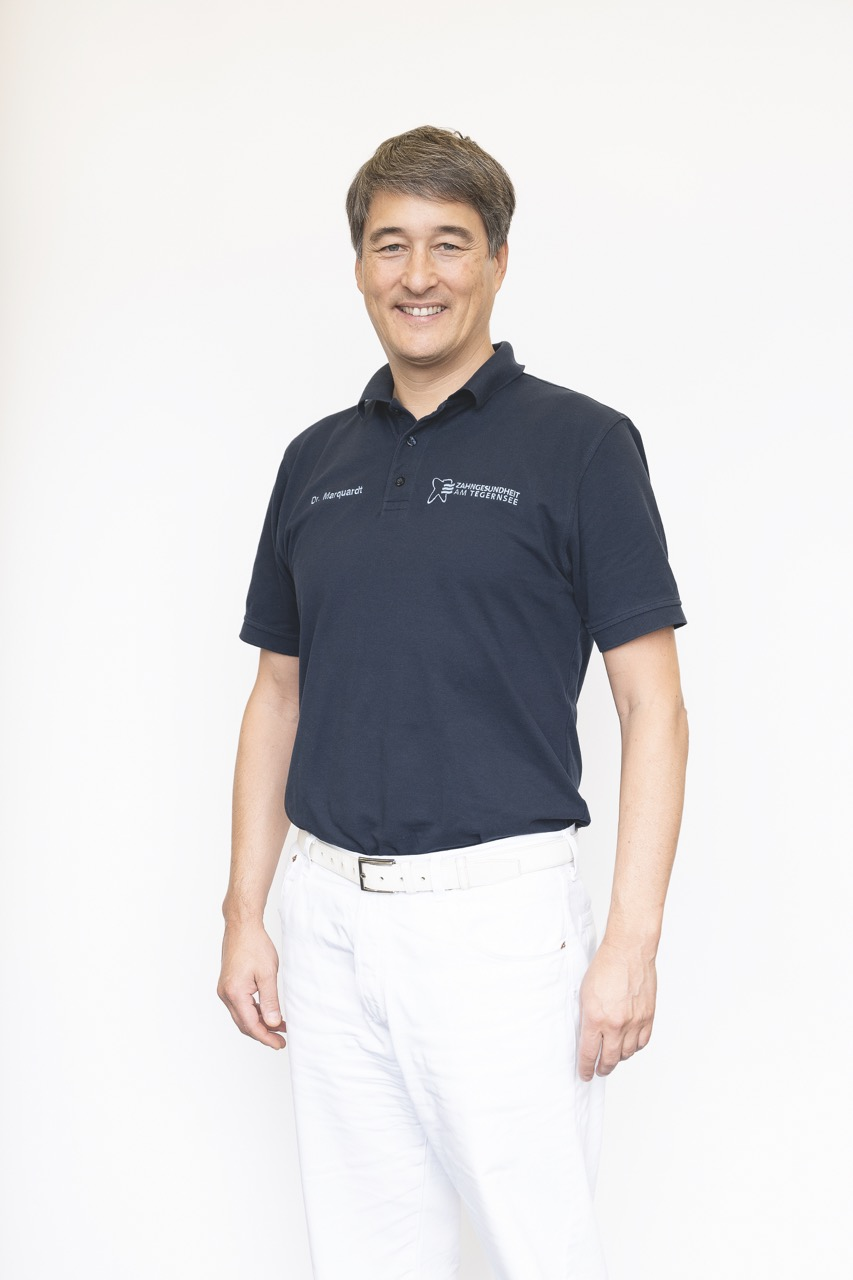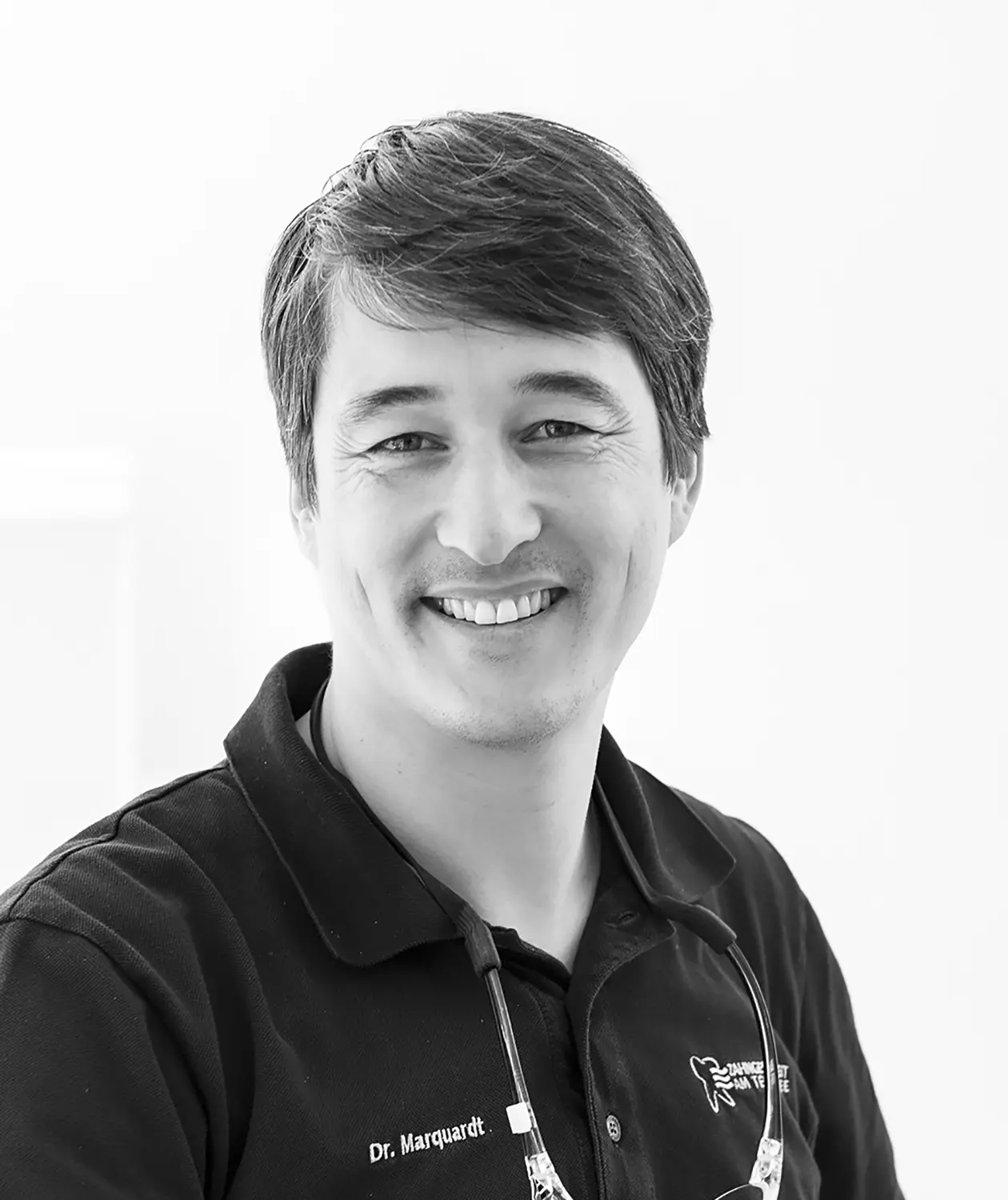
© Illustration: Andy Ward/Ikon Images
March 21, 2021
Christine Bürg und Robert Emich
Digital health is on everyone's lips – not just among dentists. What challenges do medical professionals face when it comes to working with the latest technologies? Three experts report from their medical everyday life.



© PMC
With
Dr. med. dent. Siegfried Marquardt, Dr. med. Caroline Kim und Dr. med. Tobias Neuhann
Patients today have high expectations regarding the use of digital technology. However, one must differentiate precisely when the digital revolution is a blessing and where it reaches its limits. At the moment, there are many great individual aspects. For example, in implantology. You can wonderfully place an implant, scan its position immediately after, send this data to the technician within minutes, and after three or four hours, screw the finished crown onto the implant.
That is indeed revolutionary, the accuracy is now perfect and suitable for everyday use. But as soon as we have three, four, five implants, it becomes critical. Inaccuracies then creep in, and you need more analog crutches to help digitalization.
Or: if a patient gives me a smile that doesn't fit because it is somehow "crooked" due to dental misalignments, you can completely digitize the entire head including its movements with the face scanner and create an avatar.
We can then morph and discuss with the patient what we would change for a perfect restoration. But when I look in the mouth, I realize: it's difficult. Because the position of individual teeth is so unfavorable that you can't outsmart nature. This means that the ideal of digital morphing into reality doesn't always work in the end.
"Digitization does not replace a good physician"
We also work a lot with modern Invisalign and Align technology, the Teslas in dentistry. The market leader Invisalign has the most data worldwide because there are more than 14 million cases. And the amount of data is for the AI crucial. Orthodontic treatments, jaw adjustments, and teeth straightening based on AI work perfectly both in planning and execution.
When it comes to functional problems in the jaw joint, we can digitally determine incredible things, which we used to be able to only manually feel. Even when I make an impression today, i.e., work analogously, the technician puts the model in their scanner and digitizes it.
For planning – especially in complex cases – digitization is a great help because I can foresee certain things that I hadn't seen in an analog world. However, digitization requires a learning curve of six months to a year to know where the quirks of a device are, how I need to behave, why this error message occurs, and so on.
There are computer-savvy people who have access to it, and then there are others, especially older colleagues, who say: ‘I won't touch that anymore.’ The young ones, on the other hand, who come from university want to do everything digitally. And then they realize: ‘Oops, this isn't working as I imagined!’
What also works really well is the intraoral scan. Patients with a gag reflex with a classic dental impression flock to our practices because their old dentist doesn't have this scanner. But if a good dentist masters their craft in the analog form, I wouldn't dare, as a digital expert, to say my work is better.
We're not there yet. So digitization doesn't replace a good doctor. This is even more important in dental technology, by the way. This could become a problem in the future because young dental technicians almost only work on computers and don't know how an occlusal organ works and how to shape a tooth so that everything fits together. That, for example, the occlusal surfaces aren't too high. That's why I advise every dental technician: ‘Please go through the apprenticeship first and do the old school. Then you can understand and implement the function in a digital world much, much better.’
Regarding robotics in dentistry: To use a robot, everything must be digitized first. Then the template is inserted, and you notice that the patient has different gum thicknesses at axes four and five, which the device couldn't calibrate precisely. And then the robot still has an accuracy of maybe 98 percent.
2% error rate when tracing a nerve means approximately 0.5-1 millimeter. If I have that one millimeter of misplanning, then I'm inside the nerve, and there is a risk of paralysis. So it doesn't make sense. As an experienced doctor placing an implant, it takes me about 20 minutes, I just need to prepare briefly, inform the patient, and take a 3D image so I know where the nerve is. And that's it.
The robot needs an estimated one day of preparation, then it has to be programmed and navigated by someone who can handle the joystick. This is not feasible at all. That's why robotics currently doesn't make sense when it comes to preparing a tooth or placing an implant.
Digitization in plastic, aesthetic, and reconstructive surgery helps us both in operation planning and in the operating room itself. With apps and camera systems, we can simulate in advance today what effect, for example, a breast correction would have. In the OR itself, we still work with X-rays and MRIs. Here it would be helpful if, for example, after an accident, we could transfer a fracture directly to the surgical field with the help of glasses .
“A facelift by a robot will not be available for a long time.”
In plastic surgery, AI and big data are a topic, as they already exist in breast diagnostics for breast cancer. It's about using devices that learn from experience to identify certain findings – perhaps even faster and more efficiently than a radiologist. In radiology, AI currently only works as a support, but it's only a matter of time before machines can take over independently, and we then release the decision of the AI. Developments like Chat GPT can relieve us of some of the bureaucracy, e.g., with medical reports and insurance applications.
For a solo practice, where there aren't millions in research funds available like at a university clinic, there are other facets of digitization and modernization that we can utilize. Everything must be immediately implementable and bring immediate patient benefits, as we cannot experiment.
Of course, I look at what is happening internationally – especially in Asia and the USA – and then decide whether to follow a path or not. After all, I always want to develop further – for the benefit of the patients. One should always be open to developments, stay up to date, and exchange ideas with colleagues. I find it dangerous when people say: “I've always done it this way.” Arrogance is fundamentally reprehensible. One should always look with a certain humility at what can be improved. Patients today are also much better informed.
For me personally, work has become easier over the course of my career. On the one hand, because I have a lot of experience and can better assess situations and patients. On the other hand, due to the aforementioned digital possibilities, but also developments in non-digital areas of medicine. There are many improvements in devices, anesthesia, and medications.
If we compare the development to what it was 20 years ago, a lot has happened. Even if we still need a little patience with Digital Health until it arrives in therapy, I am convinced that robotics in the OR will prevail in many areas. Small movements that a surgeon makes can be translated into even smaller, precise movements by a robot.
In the field of microsurgery, this will definitely be a help. A facelift by a robot will not be available for a long time, but maybe someday. I think visualization will come first before large-scale surgery with robotics. After all, a 3D headset is cheaper than a robot. I believe we experience progress daily, sometimes just not as consciously.
100 years ago, children still died from diabetes, then came insulin, and now it's taken for granted that they measure blood sugar via their cell phone. Another example is tranexamic acid, with which we can stop bleeding. Today it's completely normal for me to come on rounds and for patients to have almost no hematomas after a facelift or eyelid lift.
A big topic is also the Stem cell therapy – be it in the aesthetic or in the regenerative area. We have been trying for years to reconstruct organs. Stem cells will play a major role here. I also work with stem cells almost every day during surgery within the framework of legal requirements, because we have a lot of them in our own fat. I use this potential for scars, for reconstructions, for breast enlargements and for skin treatments.
Another big future topic is longevity. Patients are getting older and older with increasing quality of life. I have many patients over 80, who are still active and fit and want to keep it that way. These are also the people who have time and a certain purchasing power. Age discrimination must not take place here. Especially smaller surgeries are in demand even among 80-year-olds - eyelid lifts for example, and wrinkle injections, but also sometimes a facelift.
When we talk about digital health, we have to distinguish between the medical part and communication with patients. In ophthalmology, digital work has been done for many years, keyword laser technology and lens replacement. But we still have problems using the amount of data obtained in a reasonable way.
The diagnosis usually has to be printed out and faxed first. Example macular degeneration, which affects many older patients: they need an injection every month for about a year. The injection itself may take five minutes. But scheduling the initial diagnosis, the follow-up appointments afterwards, which cannot all be coordinated from the beginning - stronger digitization would help here.
What about Corneal laser surgery as far as classic laser eye surgery for younger patients is concerned, it can safely be said that it is now one of the safest digitally supported treatments on humans and one of the most common. But even the most modern laser systems are still sometimes delivered with a printer to print the treatment protocol on paper.
Connecting the practice system directly to the laser system is possible, but it is often not as trivial as one might think. And if the doctor who referred the patient wants the treatment data, it still has to be printed out and sent manually or faxed, so that this doctor can scan and transfer it into their system. This means that communication between doctors is poor because there are no standardized patient records, even though technically it would be possible.
"The cost factor is indeed immense, but if you want to keep up with the times, you have to invest in new technologies."
The situation is similar on the supplier side. We have excellent technology for performing surgeries, but when it comes to network all the information and making the workflow efficient, there are still issues. We have highly individualized lenses today. On a surgery day, 20 different lenses may be implanted. It is therefore important that the implants can be correctly assigned to the individual patients.
Each lens has a barcode that is scanned, but there are still analog checks needed to ensure that the patient gets the right lens in the right eye. And there are many hurdles in between because the software of devices from different manufacturers is not compatible.
However, it is already the case that technology is extremely helpful. The fact that the blind can see again through a retina chip is still a thing of the future, but there is intensive research on it. For example, there is already a chip today that allows people who have lost their vision to recognize structures in a room and to orient themselves better.
Keyword macular degeneration: Here I believe in the developments in preventive medicine. That it will be possible to analyze and predict through algorithms how the risk of macular degeneration can be reduced. If someone has the genetic predisposition for it, the disease cannot be prevented through active prevention, but the progression can be slowed down and the macular disease can be controlled to the extent that there are no significant impairments. As of February 2023, the first drug for the treatment of dry macular degeneration (geographic atrophy) has now also been approved..
Most ophthalmologists are very technically savvy. The cost factor is immense, but if you want to keep up with the times, you have to invest in new technologies. You could probably buy a significantly improved corneal laser every five to eight years, but you could still use other devices even if they are still from 1980. Sometimes the improvement of a device does not justify the financial effort and the benefit for the patients.
A lot more is happening in diagnostics, where you could buy new devices every year. There are always new functions and technologies. The biometric measurement of the anterior segment of the eye, for example, has always been camera-based. For some time now, there is a laser with high-resolution scans. This is sensational because we can see things that we have never seen before.
So new is often better, faster, less burdensome for the patient. But you always have the transition phase from established to new technology. Even if some think that doctors are no longer needed for some diagnoses or treatments, they are more important for the patients - to alleviate fears, to explain. But also to listen and be there from person to person.

Dr. Siegfried Marquardt – Head of the Dental Health Practice at Tegernsee

Dr. Caroline Kim – Plastic-Aesthetic Surgeon with her own practice in Munich

Ophthalmologist Raphael Neuhann, Clinical Director of the Ophthalmologikum and the Keratoconus & Corneal Transplantation Center Munich